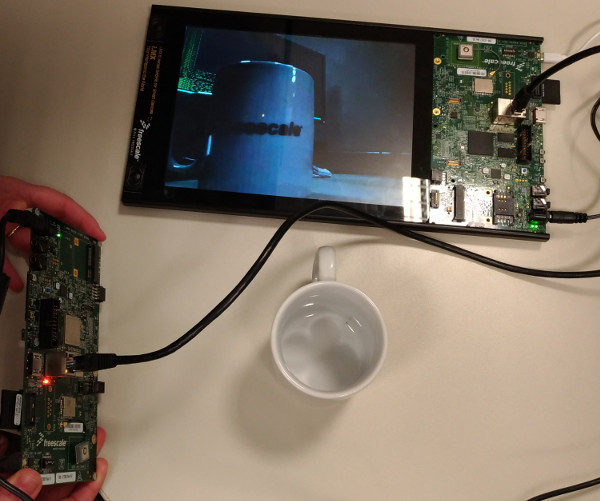i.MX 6DL/Q SABRE-SD RTSP video and camera stream
This article shows how to use the open source gstreamer1.0-rtsp-server package on i.MX6DL/Q SABRE-SD to stream video files and camera using RTSP protocol. It is based on
i.MX_Linux_User’s_Guide Rev.4.1.15._2.0.0-ga, Multimedia section.
To install gstreamer1.0-rtsp-server in any Yocto Project image, please follow the steps below:
- Enable meta-multimedia layer:
Add the following on yourbuild/conf/bblayers.conf:BBLAYERS += "$"${BSPDIR}/sources/meta-openembedded/meta-multimedia" - Include gstreamer1.0-rtsp-server into the image:
Add the following on yourbuild/conf/local.conf:IMAGE_INSTALL_append += "gstreamer1.0-rtsp-server" -
Run
bitbakeand mount yoursdcard. - Copy the binaries:
Access the gstreamer1.0-rtsp-server examples folder:$ cd /build/tmp/work/cortexa9hf-vfp-neon-poky-linux-gnueabi/gstreamer1.0-rtsp-server/$version/build/examples/.libsCopy the test-uri and test-launch to the rootfs
/usr/binfolder.$ sudo cp test-uri test-launch /media/USER/ROOTFS_PATH/usr/bin
Preparing the boards
The video/camera is streamed by the server (i.MX 6Q SABRE-SD at left) to the client (i.MX 6DL SABRE-SD at right), as the image below:

To connect more than one board to the minicom, open it with the command:
$ sudo minicom –s
Enter in the Serial port setup option and press A to set or change the PORTNUMBER, in “ttyUSB$PORTNUMBER”.
Be sure that the IPs are correctly set:
- SERVER:
=> ifconfig eth0 $SERVERIP - CLIENT:
=> ifconfig eth0 $CLIENTIP
GStreamer pipelines
Video file example
- SERVER:
=> test-uri file:///home/root/video_file.mp4 - CLIENT:
=> gst-launch-1.0 playbin uri=rtsp://$SERVERIP:8554/testYou can try to improve the
framerateperformance using manual pipelines in the CLIENT with thertspsrcplugin instead of playbin. Follow an example:=> gst-launch-1.0 rtspsrc location=rtsp://$SERVERIP:8554/test caps = 'application/x-rtp' ! queue max-size-buffers=0 ! rtpjitterbuffer latency=100 ! queue max-size-buffers=0 ! rtph264depay ! queue max-size-buffers=0 ! decodebin ! queue max-size-buffers=0 ! imxv4l2sink sync=false
Camera example
- SERVER:
=> test-launch "( imxv4l2src device=/dev/video0 ! capsfilter caps='video/x-raw, width=1280, height=720, framerate=30/1, mapping=/test' ! vpuenc_h264 ! rtph264pay name=pay0 pt=96 )" - CLIENT:
=> gst-launch-1.0 rtspsrc location=rtsp://$SERVERIP:8554/test ! decodebin ! autovideosink sync=falseThe
rtspsrchas two properties very useful for RTSP streaming: - Latency: Useful for low-latency RTSP stream playback (default 200 ms);
- Buffer-mode: Used to control buffer mode. The
slavemode is recommended for low-latency communications.
Using these properties, the example below gets 29 FPS without a sync=false property in the sink plugin. The key achievement here is the fact that there is no dropped frame:
=> gst-launch-1.0 rtspsrc location=rtsp://$SERVERIP:8554/test latency=100 buffer-mode=slave ! queue max-size-buffers=0 ! rtph264depay ! vpudec ! imxv4l2sink